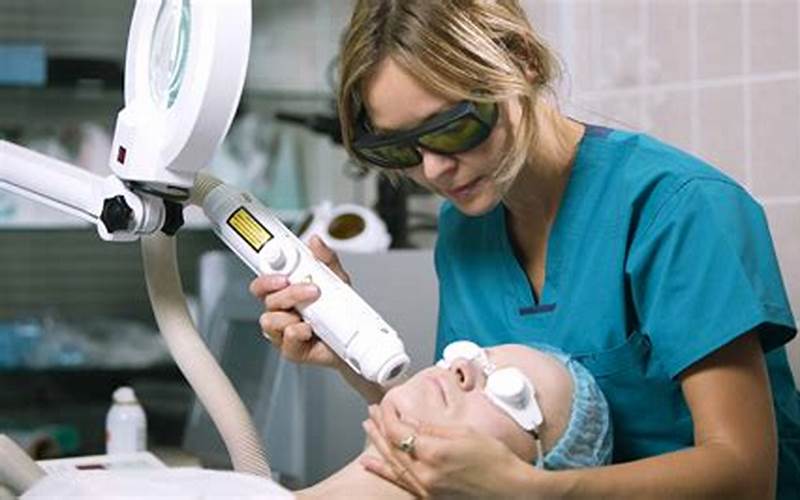🚨 Attention-Grabbing Opening:
Are you aware that the air you breathe, the water you drink, and the soil you walk on can cause a rare form of cancer? Sarcomatoid mesothelioma is a type of cancer that affects the mesothelium, a tissue layer that covers and protects most of our internal organs. This form of cancer is rare, but its survival rate is low, and its causes are numerous. In this article, we will unveil the causes of sarcomatoid mesothelioma, its symptoms, treatment options, and preventive measures.
 Source: bing.com
Source: bing.com
Before we dive into the causes of sarcomatoid mesothelioma, let’s first understand what this rare form of cancer is. Mesothelioma is a type of cancer that affects the mesothelium, a tissue layer that covers most of our internal organs, like the lungs, heart, and abdomen. This cancer can take different forms, including sarcomatoid, epithelioid, and biphasic. Sarcomatoid mesothelioma is the rarest form of this cancer, accounting for only 10-20% of all mesothelioma cases.
Like many cancers, sarcomatoid mesothelioma is caused by exposure to cancer-causing agents, also known as carcinogens. In most cases, the primary carcinogen responsible for sarcomatoid mesothelioma is asbestos.
Symptoms of Sarcomatoid Mesothelioma:
The symptoms of sarcomatoid mesothelioma are similar to other types of mesothelioma and can take years or decades to develop. Common symptoms include:
| Symptoms | Description |
|---|---|
| Chest pain | A sharp, stabbing pain in the chest that worsens with movement |
| Shortness of breath | Difficulty breathing, even while at rest |
| Coughing up blood | Blood in the sputum or mucus |
| Unexplained weight loss | Losing weight without trying to |
| Fatigue | Feeling tired and weak |
| Abdominal pain and swelling | Pain and swelling in the abdomen or stomach |
| Nausea and vomiting | Feeling sick to your stomach and throwing up |
 Source: bing.com
Source: bing.com
Sarcomatoid mesothelioma is caused by exposure to asbestos, a naturally occurring mineral used in many industrial products, including insulation, roofing, flooring, and cement. When these products are disturbed or damaged, asbestos fibers can become airborne and inhaled, causing cancer.
Asbestos exposure can occur in different ways:
1. Occupational Exposure:
Occupational exposure occurs when workers inhale asbestos fibers while working with or near asbestos-containing products. Some of the jobs that put workers at risk of asbestos exposure include:
• Construction workers:
Construction workers are at high risk of asbestos exposure because they work with many asbestos-containing products, including roofing materials, insulation, and cement.
• Shipbuilders:
Shipbuilders are also at high risk of asbestos exposure because asbestos-containing insulation was used in many ships’ construction.
• Factory workers:
Workers in factories that produce asbestos-containing products are also at high risk of asbestos exposure.
• Miners:
Miners who extract asbestos from the earth are at risk of inhaling asbestos fibers.
2. Secondary Exposure:
Secondary exposure occurs when people inhale asbestos fibers that other people bring into the home. This can happen when workers bring home asbestos fibers on their clothing, skin, or hair.
3. Environmental Exposure:
Environmental exposure occurs when people inhale asbestos fibers in the air, water, or soil. This can happen when asbestos-containing products are improperly disposed of or when natural deposits of asbestos are disturbed.
 Source: bing.com
Source: bing.com
Treatment options for sarcomatoid mesothelioma include surgery, chemotherapy, and radiation therapy. In some cases, a combination of these treatment options is used. The choice of treatment depends on the patient’s health, the stage of cancer, and other factors.
1. Surgery:
Surgery is one of the most effective treatments for sarcomatoid mesothelioma. The goal of surgery is to remove as much of the cancer as possible. Some of the surgical options for sarcomatoid mesothelioma include:
• Pleurectomy:
Pleurectomy is a surgery that removes the pleura, the tissue lining the lungs.
• Decortication:
Decortication is a surgery that removes the lining of the lungs and chest wall.
• Extrapleural pneumonectomy:
Extrapleural pneumonectomy is a surgery that removes the lung, pleura, and diaphragm.
2. Chemotherapy:
Chemotherapy is a cancer treatment that uses drugs to stop the growth of cancer cells by killing them or preventing them from dividing. Chemotherapy can be taken orally or intravenously. However, chemotherapy does not cure cancer, but it can help control the disease’s progression.
3. Radiation Therapy:
Radiation therapy is a cancer treatment that uses high-energy radiation to kill cancer cells. Radiation therapy aims to destroy cancer cells without damaging healthy tissue. Radiation therapy can be given externally or internally.
 Source: bing.com
Source: bing.com
The best way to prevent sarcomatoid mesothelioma is to avoid exposure to asbestos. Here are some preventive measures:
1. Identify Asbestos-Containing Products:
If you have an older home or office building, you may have asbestos-containing products. If you suspect that you have an asbestos-containing product, have it tested by a professional.
2. Use Protective Gear:
If you work in an industry that involves asbestos-containing products, make sure to use protective clothing, gloves, and masks. This will help prevent asbestos fibers from entering your body.
3. Properly Dispose of Asbestos:
If you have asbestos-containing products, make sure to properly dispose of them. Do not attempt to remove asbestos-containing products yourself, as this can release asbestos fibers into the air.
 Source: bing.com
Source: bing.com
1. What is sarcomatoid mesothelioma?
Sarcomatoid mesothelioma is a rare form of cancer that affects the mesothelium, a tissue layer that covers most of our internal organs.
2. What causes sarcomatoid mesothelioma?
Sarcomatoid mesothelioma is caused by exposure to asbestos, a naturally occurring mineral used in many industrial products.
3. What are the symptoms of sarcomatoid mesothelioma?
The symptoms of sarcomatoid mesothelioma include chest pain, shortness of breath, coughing up blood, unexplained weight loss, fatigue, abdominal pain and swelling, and nausea and vomiting.
4. Can sarcomatoid mesothelioma be cured?
Unfortunately, there is no cure for sarcomatoid mesothelioma. However, treatments can help control the disease’s progression and improve quality of life.
5. How long does it take for sarcomatoid mesothelioma to develop?
Sarcomatoid mesothelioma can take years or decades to develop after exposure to asbestos.
6. Who is at risk of developing sarcomatoid mesothelioma?
People who have been exposed to asbestos are at risk of developing sarcomatoid mesothelioma. Workers in industries that use asbestos-containing products, such as construction, shipbuilding, and manufacturing, are at high risk of exposure.
7. What are the treatment options for sarcomatoid mesothelioma?
Treatment options for sarcomatoid mesothelioma include surgery, chemotherapy, and radiation therapy.
8. How can I prevent sarcomatoid mesothelioma?
The best way to prevent sarcomatoid mesothelioma is to avoid exposure to asbestos.
9. Is asbestos still used today?
Asbestos is still used in some products today, although its use is heavily regulated.
10. What should I do if I think I have been exposed to asbestos?
If you think you have been exposed to asbestos, talk to your doctor. They can perform tests to determine if you have any asbestos-related health problems.
11. Can I sue my employer for asbestos exposure?
If you were exposed to asbestos at work, you may be eligible for compensation. Contact a lawyer who specializes in asbestos exposure cases to discuss your options.
12. How much compensation can I receive for asbestos exposure?
The amount of compensation you can receive for asbestos exposure depends on several factors, including the severity of your illness and the length of your exposure to asbestos.
13. How can I find a lawyer who specializes in asbestos exposure cases?
You can find a lawyer who specializes in asbestos exposure cases by doing an online search or asking for recommendations from friends, family, or other professionals.
 Source: bing.com
Source: bing.com
Now that you know the causes of sarcomatoid mesothelioma, its symptoms, treatment options, and preventive measures, it is time to take action. If you suspect that you have been exposed to asbestos, talk to your doctor. If you work in an industry that involves asbestos-containing products, make sure to use protective gear and follow the proper disposal procedures. By taking these steps, you can reduce your risk of developing this rare and deadly form of cancer.
 Source: bing.com
Source: bing.com
This article is for informational purposes only and should not be used as a substitute for professional medical advice, diagnosis, or treatment. Always seek the advice of your physician or other qualified health providers with any questions you may have regarding a medical condition. Never disregard professional medical advice or delay seeking it because of something you have read on this website.